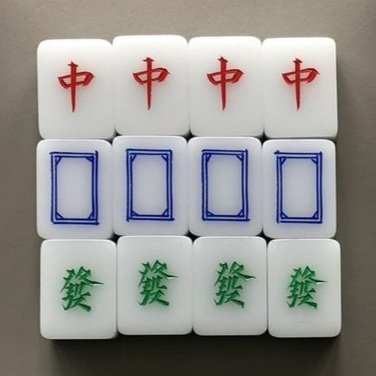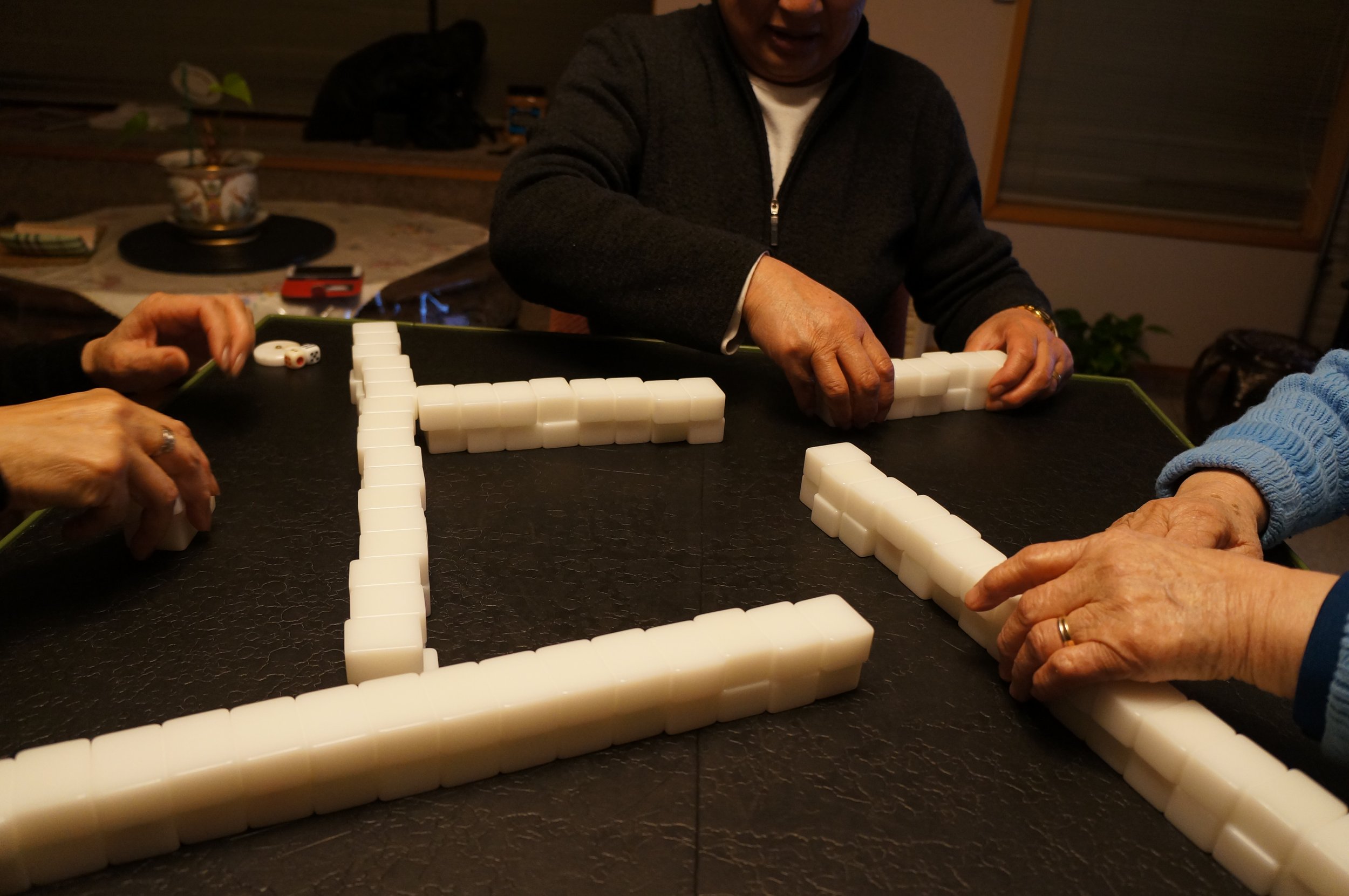
HOW TO PLAY
When it comes to my family, if there is ‘real money’ on the line, even if it’s petty cash, the game gets a little more serious, a little more exciting, and just generally more fun.
This section introduces the benefit of more complex strategies.
Strategy is also based on what type of player you are. Do you like to play it safe? Shoot for a high-scoring hand? Or opt for a fast win? How do you decide?
Wind Positions
Knowing Your Winds
One of the most common things I say while playing mahjong is: “What wind am I?” This is because your designated winds change throughout the game.
Remember, each player is sitting in a certain seat that correlates to a wind. But not just that, each of the four rounds of the game also correlates to a wind.
Knowing your wind position is a strategic advantage for winning.
Wind Round + Wind Seat = Wind Position
The first round of the game is the East Round, and so collecting a set or pair of East tiles is worth extra points.
In addition, every player is in a specific wind seat for that hand. For example, the Banker in the first hand is in the East seat, and it is the East Round, so their wind position is Double East (EE). The player sitting to their right is in the South seat, and so their position would be East South (ES), across from the banker is EW, and to their left is EN.
Collecting a set that matches either your wind seat OR wind position (aka your ‘power winds’) scores you extra points.
HOT TIP
Since all players will score extra points from a set of the correlating wind round, it’s naturally harder to collect because everyone wants it. Players often ditch wind tiles early to make it harder for others to collect sets, as it becomes riskier to throw them later on in the hand when someone might be sitting on a pair of them, waiting to ‘pung’ for points!
Holding on to Value Tiles
Winds and Dragons are known as ‘value tiles.’
Collecting sets and pairs of value tiles win you additional points, but the longer you hold on to them without matching them up, the higher the risk that discarding them late in the hand will end up helping other players put together high-value sets, or even worse, help them win.
Some people like to ditch winds and dragons early on in the hand, as a way to de-risk the odds of anyone getting high-value sets.
Whereas those who like to play the odds tend to hold on to value tiles, optimistic that they’ll pick up a match (or two!)
There’s no definitive right way to deal with value tiles, but your attachment to them (or lack thereof) may tell you something about your risk-tolerance as a player!
There are four of each wind tile (East, South, West, North)
There are four of each dragon tile (red, white, green)
Playing Defensively
Experienced players are expected to be mindful of what tiles other players are collecting and discarding. If you make moves that are considered ‘bad form’ by giving away an obvious advantage, you may incur penalties…and shame!
For example: If you discard a value tile late in the game that helps an opponent win, you will end up having to pay out more!
If a player has opened several sets that include value tiles, it could mean they are close to winning a big hand. As a defensive strategy, other players may verbally caution each other about what tiles are especially risky to throw. In other words, table talk and ‘counting cards’ is allowed, and even encouraged.
*For more strategy tips, check out my book which is available now on sale! Learn more here.*




